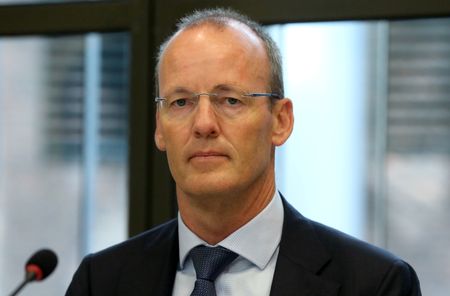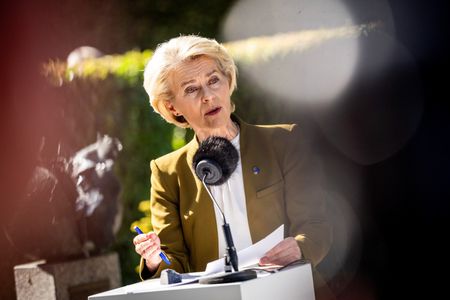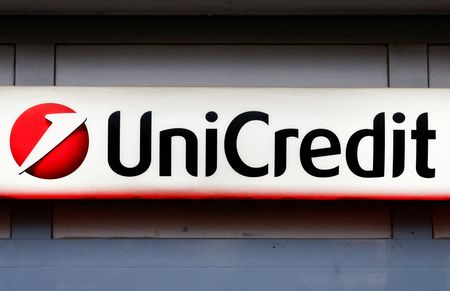By Francesco Canepa and Balazs Koranyi
FRANKFURT (Reuters) -European Central Bank policymakers lined up behind further interest rate cuts on Wednesday, indicating that next week’s reduction is all but a done deal and further moves will also come even if the U.S.
Federal Reserve remains cautious.
Having cut rates four times already in response to weak growth and falling inflation, the ECB is expected to keep moving quickly in 2025 with traders even increasing rate cut bets this week after U.S.
President Donald Trump did not announce much feared trade tariffs against the bloc.
ECB President Christine Lagarde along with policymaking council members Francois Villeroy de Galhau, Klaas Knot, and Yannis Stournaras all backed further policy easing.
José Luis Escrivá sounded more guarded but he also made an implicit case for more easing.
“The direction is very clear,” ECB President Christine Lagarde told CNBC in Davos about interest rates.
“The pace we shall see depends on data, but gradual move is certainly something that comes to mind at the moment.”
Still, Lagarde appeared to argue against going too quick, saying the ECB was not at risk of undershooting its 2% inflation target and it also needed to watch the impact of the weak euro.
“There will be interesting phenomenon that we will watch.
The exchange rate, for instance, will be of interest and may have consequences,” she argued.
Villeroy, the head of the French Central bank said the ECB’s 3% deposit rate could fall quickly since the bank was confident about getting inflation back to its 2% target.
“To expect our policy rate to be around 2% by (this) summer is a plausible scenario,” Villeroy told the World Economic Forum in Davos, arguing that 2% was his estimate for the neutral rate, which neither slows not stimulates growth.
Knot, the conservative head of the Dutch central bank meanwhile threw his weight behind rate cuts on Jan. 30 and March 6 in light of “encouraging” economic data.
“I’m pretty comfortable with the market expectations for the upcoming two meetings and farther than that I find it’s too early to comment,” the Dutch governor said on Bloomberg TV.
“The data is encouraging, it confirms the broad picture that we will return to target in the remainder of the year and hopefully the economy will also finally recover a bit,” he said.
But he flagged “risks that will play out in the more medium to long term”, including “the great many channels through which his (Trump’s trade) policy might affect the global economy and the global inflation outlook”.
Bank of Greece Governor Yannis Stournaras also backed gradual moves, making the case for 25 basis point steps and said the ECB’s 3% deposit rate should approach 2% by the end of the year.
Big tariffs from the U.S.
would pose a risk to growth and could even force the ECB to move quicker, Stournaras added.
“It is most likely that (tariffs) would accelerate the reduction in interest rates, since it would further negatively affect the size of the European economy,” Greek newspaper Naftemporiki quoted Stournaras as saying.
Of all the policymakers speaking, Spain’s Escrivá was the most cautious, arguing that developments were in line with projections but the ECB would not pre-commit to any move.
However, those projections were predicated on rate cuts this year, suggesting Escriva was also comfortable with further easing.
Money markets almost fully price in four further ECB cuts in 2025, bringing the rate the central bank pays on euro zone banks’ deposits to 2% by the end of the year.
This is near the lower end of a range that ECB economists consider neutral, neither stimulating nor restraining the economy.
In her remarks in Davos, Lagarde said the ECB was trying to pinpoint this neutral level and it was anywhere between 1.75% and 2.25%.
While some policymakers have raised the prospect of going below such level, Knot remained to be convinced.
“If the recovery proceeds, if we approach target by the middle of the year then I’m not convinced yet we need to get into stimulative mode,” he said. “Then again, there’s a range for neutral … that gives us some leeway.
Let’s not get head over heels here, the data will tell us where to go.”
(Editing by Sharon Singleton, Shri Navaratnam and Tomasz Janowski)











